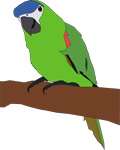Australian Magpie
Gymnorhina tibicen
Family: Artamidae (Woodswallows, Butcherbirds, Currawongs, 15 species in Australia)
Size: 36-44 cm
Distribution: All of Australia except parts of western inland Australia and northern Australia
Status: Locally Abundant to Common
Habitat: Open forest, farms, urban land.
References: Simpson and Day, Reader's Digest, Wikipedia
The Australian Magpie is one of the most famous Australian birds. It is commonly seen in grassy open areas such as parks and sporting fields. It has a red eye. It is a distinctive looking bird and easy to identify, though occasionally currawongs are mistaken for magpies.
Around the breeding season (late August to early October) some magpies will attack humans that pass close to the nest, swooping down low and sometimes pecking the back of the head of the person. The attacker is almost always (99% of the time) the male bird. Holding a stick above your head is a good deterrent.Unlike the spurwing plover though, a magpie will usually attack from behind, and only an unusually agressive magpie will attack when you are looking right at it. There have been reports of magpies landing in front of someone and lurching up to land on their chest while pecking at their face and eyes, but I have never seen this happen.
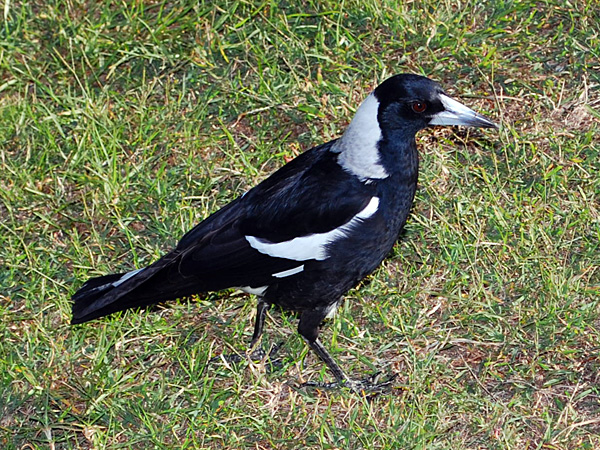
Photo: Watsons Bay NSW. Higher Resolution (1221 x 915).
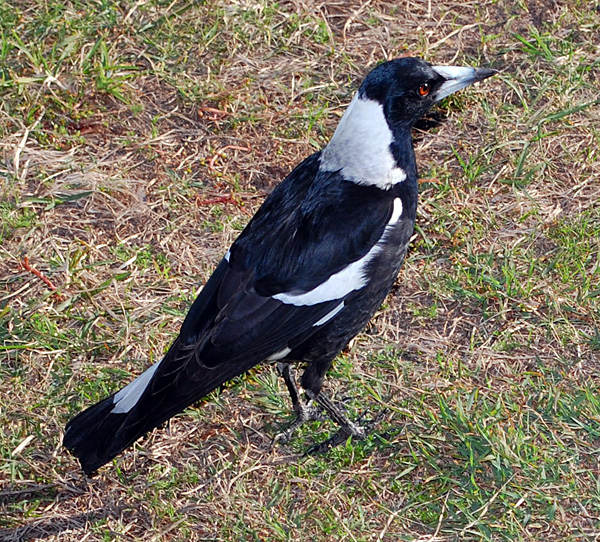
Photo: Watsons Bay NSW. Higher Resolution (1158 x 1047).
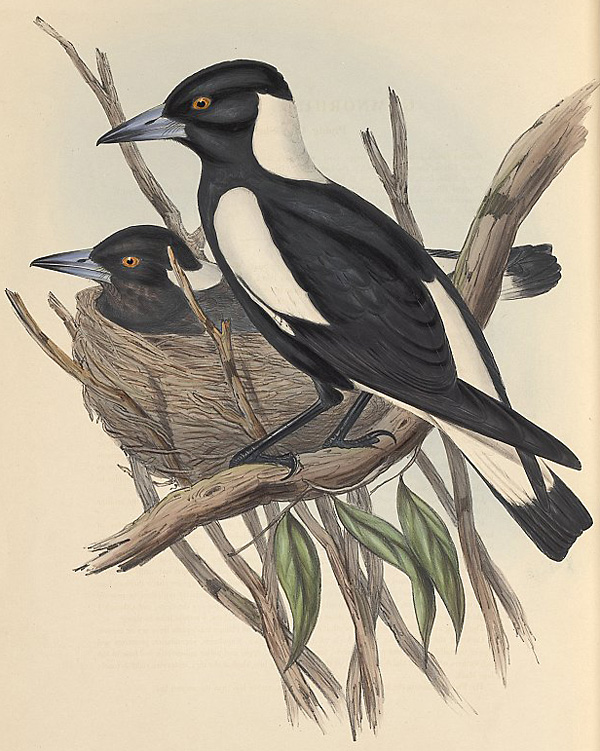
Artwork: John Gould, 'The Birds of Australia', 1848. Original Scanned Image.
Some Birdwatching Resources
|
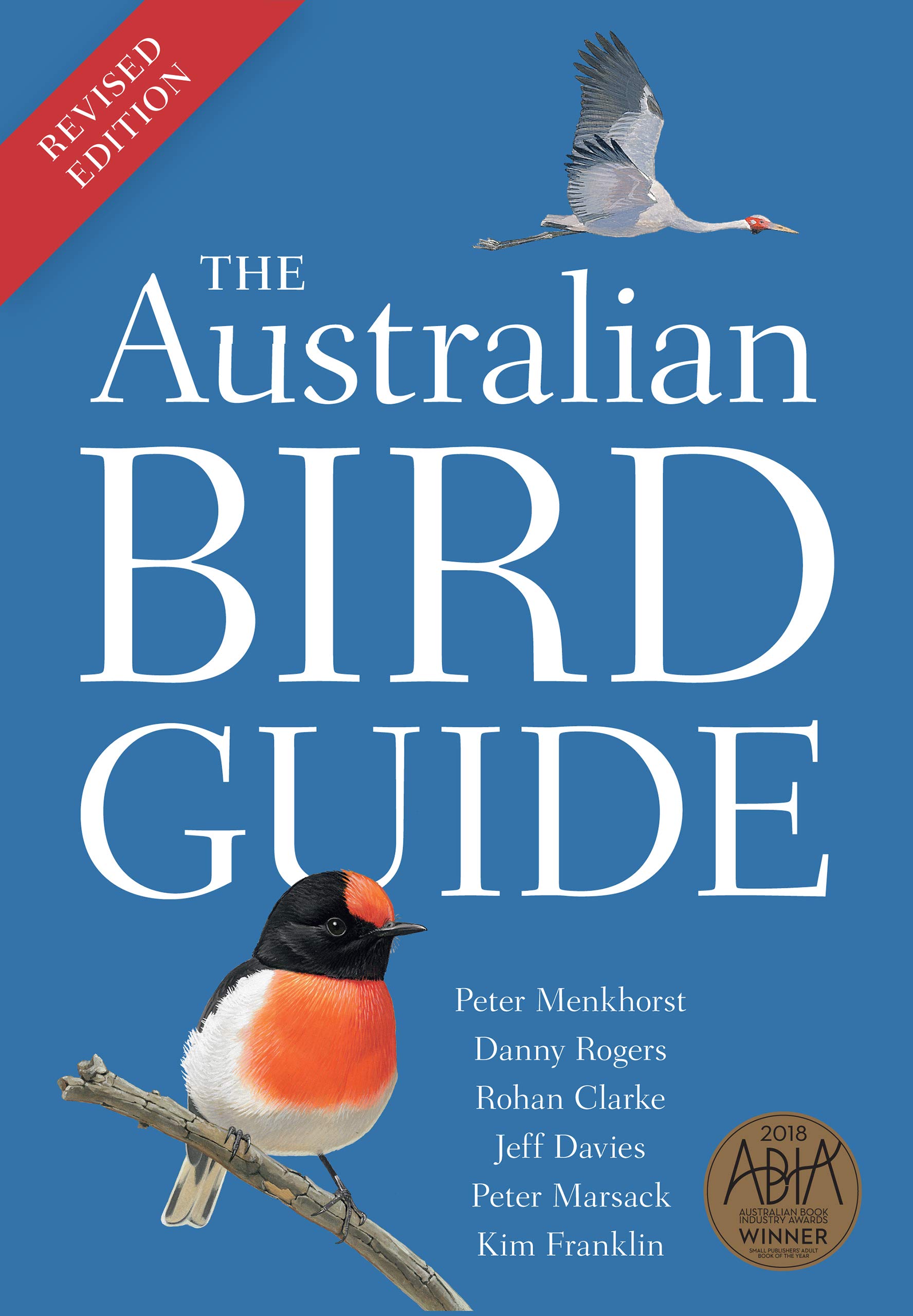 NEW: The Australian Bird Guide, by Peter Menkhorst (Author), Danny Rogers (Author), Rohan Clarke (Author), Jeff Davies (Illustrator), Peter Marsack (Illustrator), Kim Franklin (Illustrator).
NEW: The Australian Bird Guide, by Peter Menkhorst (Author), Danny Rogers (Author), Rohan Clarke (Author), Jeff Davies (Illustrator), Peter Marsack (Illustrator), Kim Franklin (Illustrator). Revised Edition 2019. Original edition published 2017. This is a newer Australian bird field guide that I just got recently. It may be the best one out of all of them now. Though I still like the pictures better in "Simpson and Day" in terms of their artistic value, and that they just look more interesting to me than the drawings in any other bird field guide I've seen. This one has more "clinical" looking pictures. They are coloured artist-rendered drawings, not photographs. Though the more "clinical" look is meant to be more anatomically accurate, and better for identification.
The rest of the book is wonderful, with different coloured regions on the range maps, and very high quality information overall. It was the winner in its category for an Australian Book Industry Awards (ABIA) award for book of the year in 2018.
Purchase from Australia (The Nile)
Purchase from Australia (Fishpond)
Purchase from Amazon.com (USA Site)
Purchase from Amazon.com.au (Australian Site)
| See AlsoAustralian Bird Field Guides
Return to Australian Birds
Return to Site Map
Share This Page
australia australian
Content is copyright © Survival.ark.au 2005-2024 All Rights Reserved. Terms of Use. Definitely read the disclaimer before trying anything from this website, especially including the practices and skills. This website uses affiliate links – this doesn't cost you any more, but I get a commission on purchases made through the website. As an Amazon Associate I earn similarly from qualifying purchases.
|





